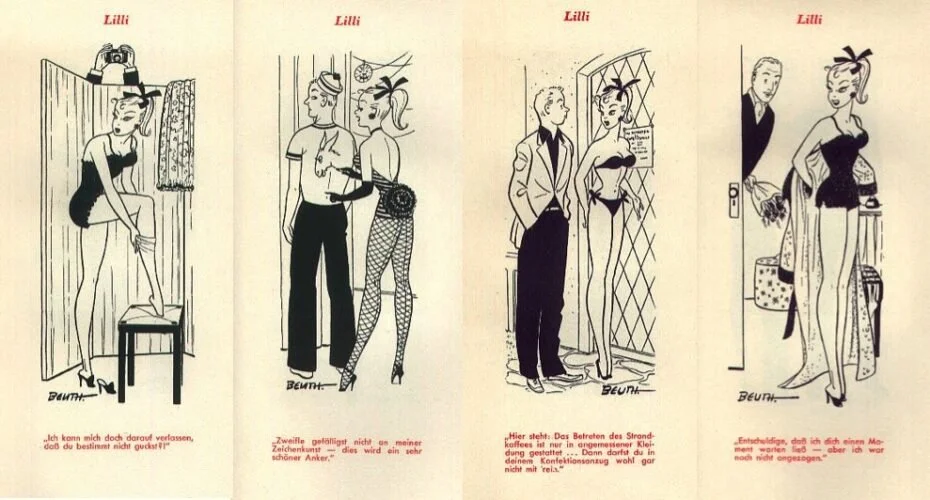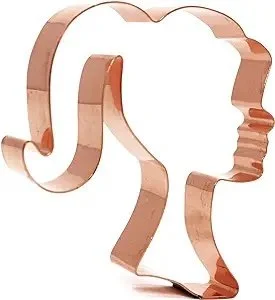‘Death Positive’ Barbie: In the Beginning, Ruth Created.
I have found myself utterly captivated by the Barbie movie. To put it mildly, I'm head over heels, completely entranced, and I've been known to watch it two to three times a day. Admittedly, I've had more free time on my hands lately, a rarity since the dark days of the pandemic. While I've been yearning to write an extensive piece on Barbie and her creator, Ruth Handler, the sheer scope of the project often leaves me feeling overwhelmed. To kick things off, let's begin with the fundamentals: delving into the persona of Ruth Handler and the fascinating genesis of the iconic Barbie doll.
Let There be Lilli…
Bild Lilli the “inspiration” for Barbie
Picture it: 1959, a world on the cusp of transformation. Post-war optimism was in the air, and the American Dream was taking new forms. Ruth Handler, with her husband Elliot, found herself amidst this zeitgeist. But the spark of inspiration that led to Barbie's creation had roots in Europe. During a visit to Germany, Ruth encountered a cultural icon that would leave an indelible mark on her imagination – the German Bild Lilli doll.
Bild Lilli was a fashionable and sophisticated figure featured in a popular newspaper comic strip. She was known for her distinctive style, her vibrant personality, and her modern sensibilities. Ruth Handler couldn't help but be captivated by Lilli's charm and the possibilities she represented. It was here, in the playful yet sophisticated spirit of Bild Lilli, that the seeds of Barbie were sown.
Watching her daughter Barbara (for whom Barbie would be named) engage in imaginative play with paper dolls, Ruth envisioned a three-dimensional toy that would allow children to project their dreams onto a miniature canvas. The influence of Bild Lilli, with her flair for fashion and vibrant personality, played a significant role in shaping Ruth's vision for the iconic Barbie doll.
A Visionary's Aesthetic
In true Vogue fashion, Ruth Handler was an arbiter of style herself. With a finger perpetually on the pulse of fashion, she was determined to create a doll that would inspire and delight young girls. The first Barbie, launched in 1959, was a vision of sophistication. She bore the impeccable signature of the era – a blonde ponytail, a black-and-white striped bathing suit, and a pair of high heels. Barbie embodied the very essence of post-war chic.
As time marched forward, so did Barbie's wardrobe. Ruth recognized that fashion was not stagnant; it evolved, and so should her doll. Barbie became the quintessential fashion chameleon, sporting ensembles from every corner of the globe. From haute couture to beach-ready boho, Barbie's wardrobe was a reflection of Ruth's unyielding commitment to staying ahead of the curve.
Breaking Boundaries
Beyond her fashion-forward facade, Barbie was a trailblazer in the realm of social change. Ruth Handler, keenly aware of the changing role of women in society, understood the importance of inspiring young girls to dream big. Barbie was not just a doll; she was a symbol of empowerment, a harbinger of endless possibilities.
In 1965, Ruth introduced Barbie as a professional woman, featuring her as an astronaut four years before Neil Armstrong's historic moonwalk. This was just the beginning. Over the years, Barbie would take on countless careers, shattering glass ceilings and proving that girls could be anything they aspired to be.
A Lasting Legacy
Today, nearly six decades after her inception, Barbie continues to captivate and inspire. Her influence extends far beyond the world of play. She has graced the cover of Vogue, been featured in museums, and served as a muse to artists and designers alike. Ruth Handler's vision has transcended generations, shaping the way we view fashion, play, and the limitless potential of girls.
As we celebrate the enduring legacy of Ruth Handler and her creation, Barbie, we are reminded of the power of innovation, the allure of style, and the boundless potential within us all. In the pages of Vogue and beyond, the story of Ruth Handler and Barbie continues to unfold, a testament to the enduring magic of dreams brought to life.
Final Accessories…
In the annals of fashion and innovation, Ruth Handler's name will forever shine as a beacon of creativity, style, and empowerment. Barbie, her most beloved creation, remains an icon that transcends time, inspiring generations of young dreamers to explore their limitless potential. Ruth Handler, the visionary queen, has left an indelible mark on our world, reminding us that dreams are the most fashionable accessories of all.
Let's combine the fun and whimsy of Barbie with a delicious Jewish pastry with "Barbie's Mini Rugelach Dolls". Rugelach is a delightful Jewish pastry, and in this recipe, we'll give it a Barbie-inspired twist by shaping the rugelach into mini doll figures.
Rugelach Inspired Barbie Pop-Tarts
Ingredients:
For the Rugelach Dough:
1 cup unsalted non-dairy butter, cold and cubed
8 ounces non-dairy cream cheese, cold and cubed
2 cups all-purpose flour
1/4 teaspoon salt
2 tablespoons granulated sugar
1 teaspoon vanilla extract
For the Filling:
1/2 cup granulated sugar
2 teaspoons ground cinnamon
1/2 cup finely chopped nuts (walnuts, pecans, or almonds)
Like if you have a food processor toss those little nutters in it and chop until fine and crumbly
1/2 cup finely chopped raisins or currants
1/2 cup apricot jam or raspberry jam
For the Decorations:
Edible food coloring pens or edible food gel colors
Small candies or colored sugar for decorating (optional)
Mini chocolate chips or chocolate vermicelli for hair (optional)
Instructions:
For the Rugelach Dough:
In a food processor, combine the cold cubed butter, cold cubed cream cheese, flour, salt, granulated sugar, and vanilla extract. Pulse until the mixture resembles coarse crumbs and then knead the dough until it comes together into a ball.
Divide the dough into two portions, wrap each portion in plastic wrap, and refrigerate for at least 30 minutes.
Assembling the Tarts
Line a baking sheet with parchment paper.
In a small bowl, mix together the granulated sugar, cinnamon, chopped nuts, and raisins or currants for the filling and set to the side.
I recommend taking the jam you wish to use for this recipe, portioning it out in a bowl big enough for you to whisk in, and whisking the jam up. You want this to be easy to spread.
You don’t have to do this but I’m not saying this for my health. It’s because I may have made this mistake before.
Take one portion of the chilled dough out at a time and roll it out on a lightly floured surface into a rectangle, about 1/8 inch thick. We want to keep this cold because there is a lot of fat in this recipe and it’s crucial to be delicate and quick. I know I know but it gets easier.
Using a Barbie doll-shaped cookie cutter, cut out doll shapes from the dough.
Gently place each of the doll heads onto a baking sheet lined with parchment paper or a silicone baking mat.
Spread a thin layer of apricot jam or raspberry jam onto the doll-shaped dough you have just cut, leaving a small border around the edges. This is important because we will be sealing these tarts up later and need that edge to seal everything in.
Sprinkle the sugar-nut-raisin mixture evenly over the jam.
Place the baking sheet in the fridge to keep your bottoms cool while we work through the next half of the dough.
Which means, it’s time to take that other plastic wrapped dough out of the fridge.
Roll 2nd disc out into a rectangle and cut into the same amount of Barbie head’s as you did with the first half of the dough. These be the tops of your homemade pop-tarts.
Grab a small bowl and fill with water. 1/4 cup should be enough. We are using this in place of an egg wash to make this vegan, and less complicated. If you are an aquafaba pro you can use this as ‘glue’ instead of water but my guess is most of you are like, “I have no idea what aquafaba is!” And that’s fine. Water will work for this.
Remove your baking sheet from the fridge and set next to your bowl of water. Dipping a clean hand finger in the water gently brush the edges of your tart with the water. This rehydrates the water and helps activate the gluten which will help seal our tarts. You don’t have to overdo it, we just wanna dampen the edges.
Now, take each of the Barbie shapes that do not have filling and gently place each Barbie on top of the filling-topped Barbies. Use your fingertips to press firmly around the pocket of filling, sealing the dough well on all sides.
Poke holes in the tops of each filled pastry to allow the steam to escape. This helps get your pop-tart pastry nice and flaky. I used a toothpick to poke 8 holes in each. Seal the edges by crimping with a fork, to prevent the sides from opening as the pop-tarts bake. Refrigerate the filled pop-tarts uncovered for at least 20 minutes and up to 1 hour. This chilling let the pop-tarts rest before baking. It also firms up the pastry, since it has been out at room temperature for so long at this point.
Now you can preheat oven to 350°F (177°C).
It’s ok to have waited this long. I know it’s usually the first thing we do but we want to keep the kitchen cool for as long as possible and save gas so there is a strategy to this
Optional: If you are using aquafaba in this recipe brush the tops with the remaining “egg wash”. This egg wash will give your pastry that beautiful golden sheen. I swear I’ll expand on aquafaba for the non vegan folks and give you the courage to use it but for now I wanna focus on what’s easy.
Bake for about 22-28 minutes or until they’re golden brown, rotating the pan halfway through baking. Let the baked pop-tarts cool on the pan for about 5 minutes, then transfer to a wire rack to cool completely before decorating.
For Decorating:
Let the rugelach pop-tarts cool completely on a wire rack.
Once cooled, use edible food coloring pens or food gel colors to decorate the rugelach dolls' face.
These Barbie-inspired Rugelach Pop-Tarts are not only cute and creative but also deliciously sweet. They're a perfect treat to celebrate the style and creativity of Barbie, combined with the rich Jewish pastry tradition of rugelach. Enjoy!
Additional Sources:




